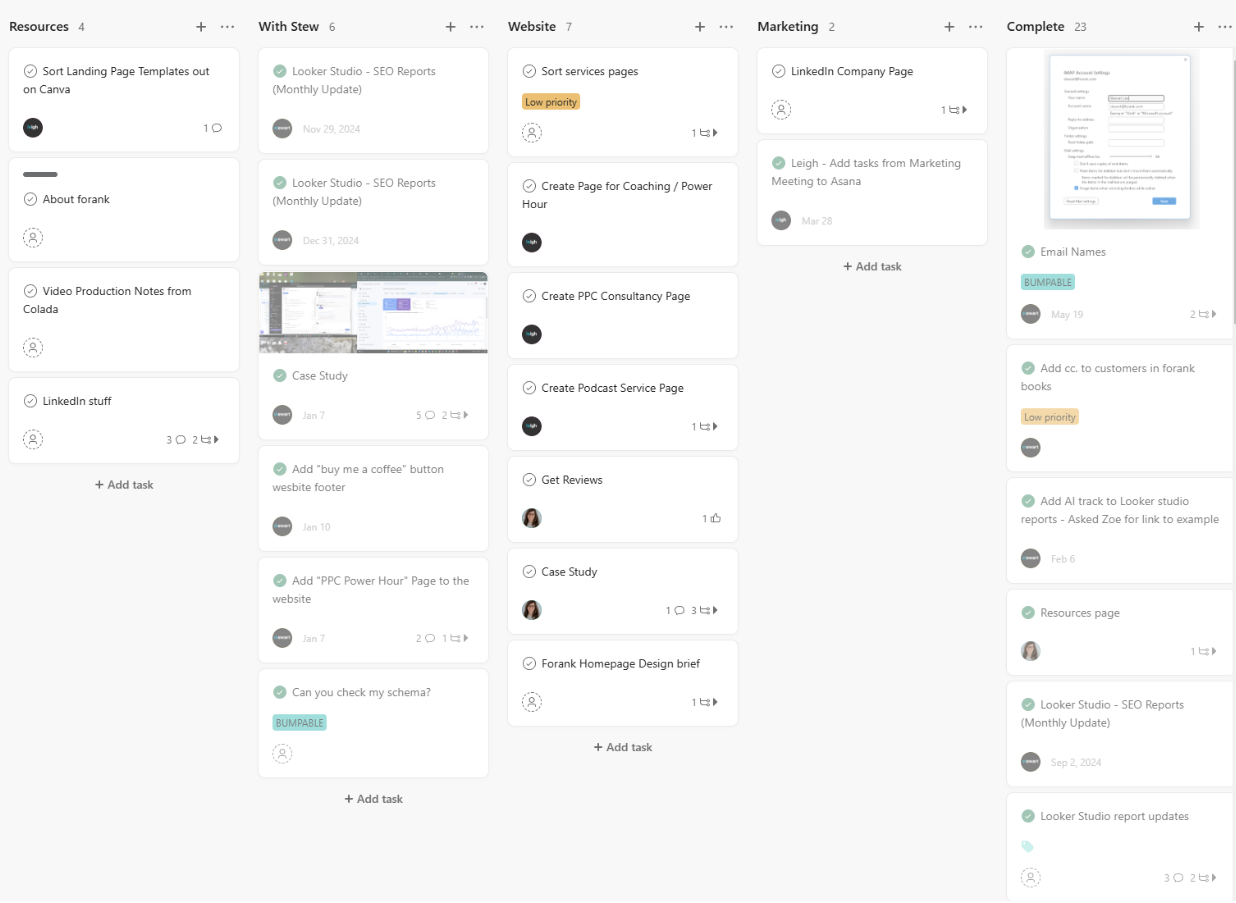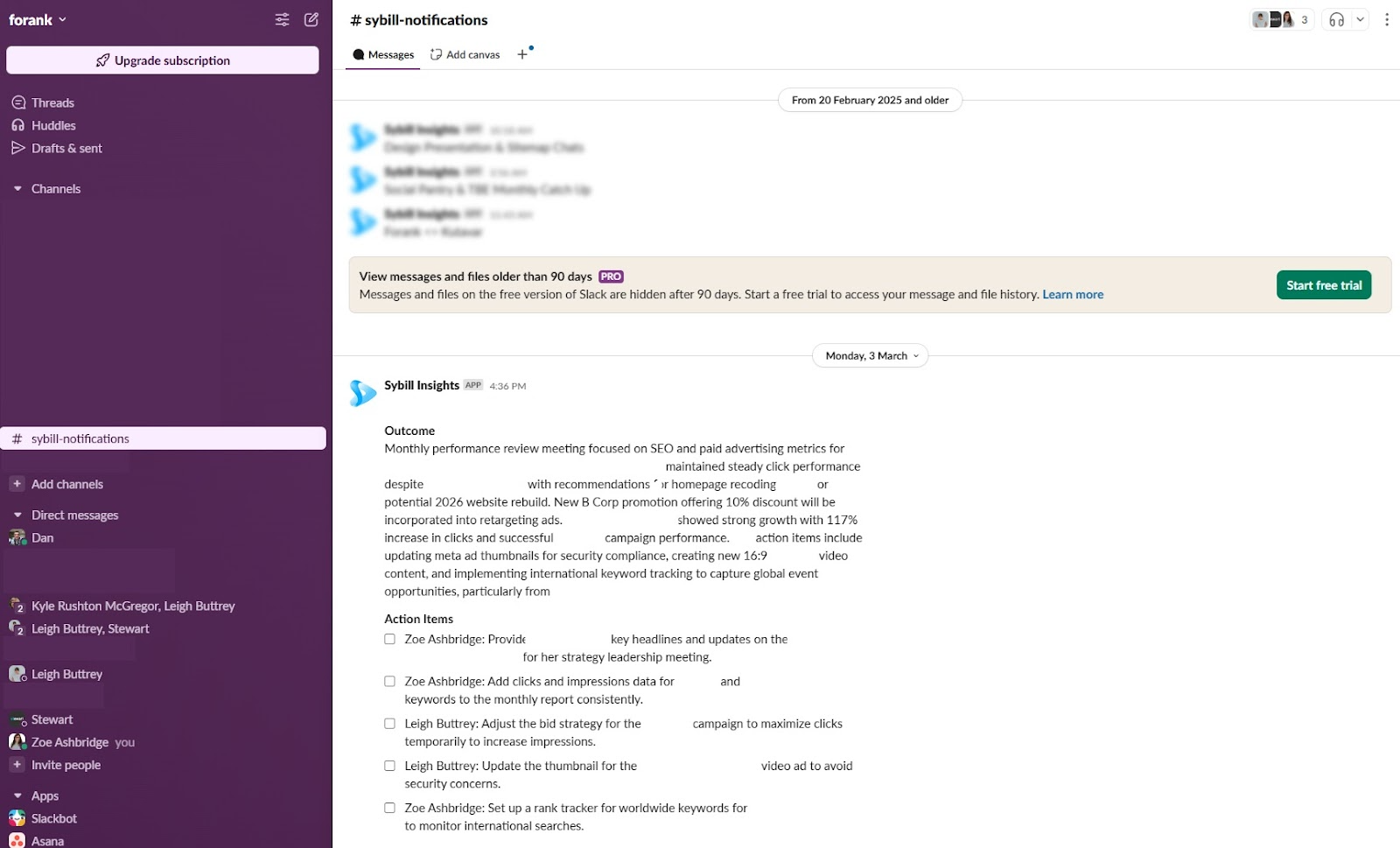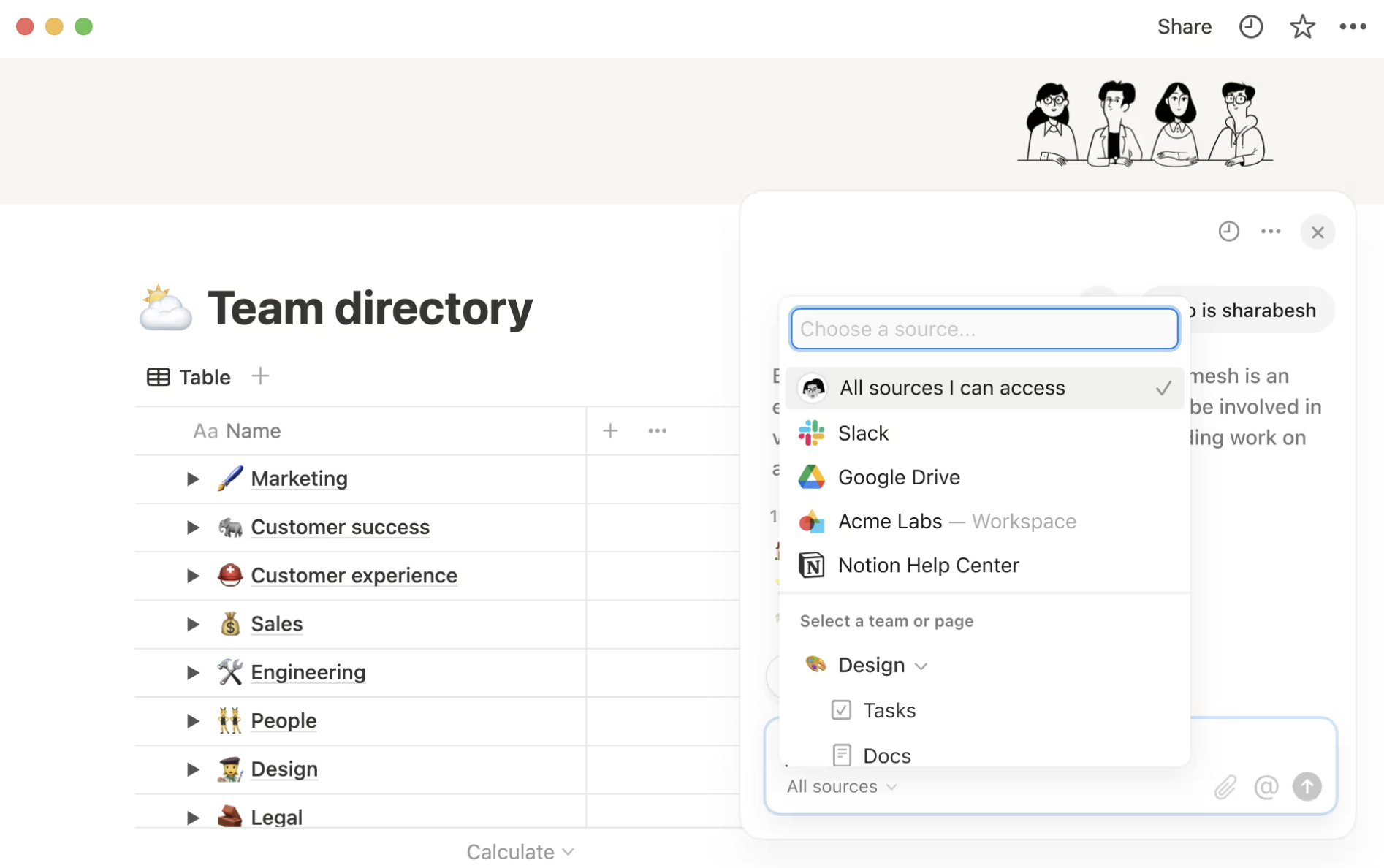Top 5 AI tools for product managers
AI product management solutions are alleviating pressure and keeping experts working in the areas of their jobs they most enjoy.
There’s no doubt about it: The product manager role is high-pressure. It demands managing input from multiple stakeholders and interpreting data in every form, from metrics and numbers to feedback and opinions. The administrative side alone can become overwhelming.
The good news?
AI tools for product managers can lighten the load by automating repetitive tasks and analyzing large data sets. Having the right AI solution is like hiring the fastest and most obedient assistant who takes over all the jobs you don’t like, empowering you with the data you need to be the best, most efficient product manager possible.
In this article, I share five of the best AI tools for product managers and everything you need to know before you invest. You’ll find the name of each tool, what you can do with it, pros, cons, key features, and limitations. I also explore pricing as well as who or what each tool is best for.
1. Jotform AI Agents
Best for: Automating workflows, customer support, and market research
Jotform AI Agents have product managers covered from every angle, whether they’re collecting feature requests, creating marketing surveys, or gathering user feedback. Jotform’s AI functionality for product managers doesn’t stop there, though.
Trained with the data you provide, Jotform AI Agents can ask questions and answer your customers’ queries while sounding like real team members. You can customize the agents as much as you like by building your AI from scratch or by starting with a form, using a template, or even cloning yourself.
The best thing you can do is browse Jotform’s 7,000 AI Agents to see which ones are most helpful to you. But with so many options, where do you start?
In the section that follows, I introduce some of the key features, limitations, and pros and cons of Jotform AI Agents, including links to some related agents available.
Key features:
- AI phone answering systems for customer insights: The Jotform AI Phone Agent captures customer inquiries, categorizes feedback, and highlights recurring pain points, helping product managers refine product strategies.
- Streamlined data collection and market research: AI-powered survey agents handle question sequencing, response validation, and real-time analysis. Product managers can collect and analyze customer feedback, feature requests, and market trends more efficiently with Jotform’s Marketing Survey Agents.
- Customer support optimization for product teams: AI Agents can handle FAQs, assist users in troubleshooting, and provide self-service options, reducing support tickets and allowing product teams to focus on innovation.
Limitations:
- There’s a limit of five agents in the free version, but that’s enough for you to see how the software works and whether it’s right for you.
- The free version includes Jotform branding, which might feel like a limitation for some. You can remove Jotform’s branding with paid tiers.
Pros:
- With customizable AI Agent creation, product managers can define AI Agent functions, select templates, and train them using product documentation, FAQs, and company knowledge bases to improve accuracy and relevance.
- You can try AI Agents for free if you become a beta user.
- Jotform offers a robust help center with over 70 help articles to help you get started.
- You can access all AI Agents in one place (your Jotform account), making management very easy.
Cons:
- The number of options can be overwhelming. Just start steadily, prioritizing the AI Agents that feel most useful for you. I highly recommend any agents linked in this section for product managers.
- Users must upgrade to a paid plan in order to remove Jotform branding.
Plans/Pricing: Get started with up to five AI Agents and 100 monthly conversations for free. Or choose from three paid plans. Prices shown require annual billing.
- Bronze: $34 per user per month for 25 AI Agents and 1,000 monthly conversations
- Silver: $39 per user per month for 50 AI Agents and 2,500 monthly conversations
- Gold: $99 per user per month for 100 AI Agents and 10,000 monthly conversations.
- Enterprise pricing available upon request
G2 rating: 4.7/5 with over 4,000 reviews
2. Asana
Best for: Managing projects related to products, managing teams that include remote workers, visibility across projects, and automated workflows
I’m a huge fan of Asana. I’ve worked in project management for over a decade and have tried many tools — all of which have their benefits — but Asana is my favorite. It’s not the cheapest on the market, but in my opinion, it’s the best all around, and despite the price, I can’t switch to another. (I did try.)
In the following screenshot, you can see the setup for just one board from my account. I have boards for every client and often a board for each product, depending on the scale of the product requirements.
A large part of a product manager’s job is to manage projects for delivery that’s on time and within budget. Asana helps tremendously because it keeps you on track, with eyes on all related tasks and subtasks, so nothing gets forgotten. It allows you to assign deadlines to ensure accountability and discuss tasks within the comments to minimize emails and Slack notifications.
Asana can unite multiple teams for seamless coordination between design, engineering, and business departments.
Key features:
- Smart summaries provide an AI-written summary of each project or task. They are excellent for getting a quick overview of what’s happening.
- Automations are amazing for automating repetitive tasks or workflows that need to take place after specific triggers.
Limitations:
- Asana is not as customizable as some other solutions, like ClickUp, which offers many automation options at a cheaper price. But I think Asana’s limitations make it easier to use, as it prevents boards from getting disorganized. With ClickUp, you cannot afford to work without strict processes or dedicated admins. While you benefit from processes and admins on Asana, it’s not quite as critical as with more customized solutions.
- Asana’s AI solutions are somewhat limited. Asana AI is great for workflows or generative AI summaries to help create projects, but it lacks the ability to analyze data that other solutions, such as Dovetail, have.
Pros:
Asana has many pros, but there are three main reasons I stay committed to the platform.
- Automated workflows allow you to create a workflow from a trigger. For example, when you launch a new product feature, you can automate tasks for marketing teams to send a message to existing users via email.
- The intuitive user experience (UX) is probably what I love most about Asana. What it can do out of the box is perfect for me.
- Asana’s project visibility is unrivalled. On paid plans, you have Gantt charts, Kanban boards, lists, calendar views, and more. You can see what’s happening, where tasks are stalling, and who’s responsible. The dashboard provides an overview of an entire project, including tasks that are overdue.
Cons:
- Asana is more expensive than solutions from competitors such as ClickUp, Monday, or Jira.
- Valuable features, including workflows and automation, are not free, even though you can easily access them on free plans from ClickUp.
Plans/Pricing: You can get started on Asana with a free Personal plan for unlimited tasks and collaboration with up to 10 teammates, but you’ll likely want to unlock additional features or pay for more members. Paid plan pricing is tiered, and the prices shown here assume annual billing.
- Starter: $10.99 per user per month, for everything in Personal plus Asana AI, workflow builder, project dashboards, timeline and Gantt view, and no user seat limits
- Advanced: $24.99 per user per month, for everything in Starter plus unlimited portfolios, integration with Salesforce and Power BI, and native time tracking
- Enterprise plans also available
Asana’s pricing can be a bit confusing, so let me help you understand. Your Asana account can have unlimited free guests, which is amazing if you work with consultants or other companies. But all members are billed as paid users. A member uses Asana with the same email domain as you.
For example, if Jotform used Asana, everyone at Jotform, like emily@jotform.com and simon@jotform.com, would be a paid user. However, david@theconsultancyform.com is a guest and has a free seat.
G2 rating: 4.4/5 with over 12,000 reviews
Did you know?
Jotform integrates with Asana so you can automatically add tasks to existing projects, add comments to tasks, create new projects, and create sections within your board.
3. ChatGPT
Best for: Ideation, data analysis, and generative AI
I use ChatGPT like a reliable sidekick for many tasks and projects. If you’re using the paid version, you can create projects where you can add instructions and files. There is one major benefit of the paid version: Your chats won’t get deleted. So, each time you log in, you can refer to an earlier chat or continue one as a project develops.
Think of ChatGPT as your copilot or virtual assistant. This tool is not a strategic thinker — you are — but you can use it to alleviate a lot of your mental load.
Key features:
You can use ChatGPT’s AI in a multitude of ways, but here are some common use cases for product managers:
- Data analysis: Gone are the days when product managers needed to spend hours analyzing large data sets in spreadsheets — ChatGPT can do it for you within minutes.
- Data management: So the AI can best support you, use the Projects feature to add files related to your product, and then tell ChatGPT to refer to the files before it constructs a response.
- Generative AI for creating content: Use the generative AI to create any type of content. With the right prompts, you can create drafts of Product Requirement Documents (PRDs), emails, stakeholder communications, and more.
Limitations:
- Overreliance is a risk for product managers using any AI tool, but I think it’s especially risky with ChatGPT, simply because the tool can do so much, and it does so with such conviction, making it easy to rely on it a little more than you should. Remember: Its capabilities are limited.
Pros:
- Affordable: ChatGPT is very affordable at $20 per month, and I guarantee that if you start using it, you’ll use it a lot. Now that I have a ChatGPT subscription, I use it almost every day.
- Versatile: Product managers can use ChatGPT for many tasks, from brainstorming ideas to analyzing data.
Cons:
- It’s hard to find a con for ChatGPT because, if used correctly, it is very good.
Plans/Pricing: ChatGPT is available for free, and for many, the free version is enough. However, if you require more advanced AI capabilities, such as the ability to use newer versions of ChatGPT or have ChatGPT review and edit files, you’ll need to invest $20 per month.
G2 ratings: 4.7/5 with over 900 reviews
4. Sybill
Best for: Taking meeting notes, analyzing call data, extracting product insights or to-do lists from calls, and sentiment tracking
My cofounder introduced me to Sybill. Now, I can’t live without the meeting notetaker or the to-do list that it automatically creates and sends as a message into my company’s Slack after every meeting. The following image shows how Sybill sends notifications to Slack.
Sybill’s AI offers even more features for product managers, including call analysis, transcriptions, summaries, key themes, and more. Instead of spending lots of time manually identifying these features your self, let Sybill AI do it for you.
Key features:
- Summarize calls in seconds, highlighting key moments, product feedback, and next steps.
- Integrations with tools like Slack make it possible to send transcripts or to-do lists to key recipients ready for action, removing the bottleneck of product managers having to distribute notes. You can also integrate Sybill’s AI call summaries directly into your customer relationship management (CRM) system.
Limitations:
- Sybill is limited to call-based interactions.
- This tool is more sales-focused than competitors like Fireflies.ai, which markets to a broader audience but ultimately has similar functionality.
Pros:
- Automated call summaries with to-do lists make it easy to leave calls with the most critical tasks at the forefront.
- Sentiment detection analyzes the tone of calls and what customers say, helping product managers understand how customers feel.
Cons:
- Since Sybill is limited to call-based interactions, it isn’t helpful for analyzing survey data or other tasks.
Plans/Pricing: Sybill offers a 14-day free trial for both of its paid plan tiers. I’ve used the Essentials package for six months and am pleased with its capabilities.Prices shown here are for annual billing.
- Essentials: $19 per user per month, includes unlimited call recording and storage, transcription in 100+ languages, and Magic Summaries to share on Slack and email
- Business: $79 per user per month, includes all Essentials features plus Auto-extract Insights from calls and emails, autofill CRM fields, and behavioral AI insights on nonverbal cues
- Enterprise plans also available for custom solutions
G2 rating: 4.8/5 with just 142 reviews
5. Notion
Best for: Document and data management, knowledge bases, gathering documentation into one place, and AI writing assistance
I use Notion as a knowledge base or data and document repository. The tool does have project management functionality, but as I mentioned previously, there are better alternatives out there for that, such as Asana.
Notion lets you combine all your documents — text pages, databases, wikis, calendars, and more — in one place. And for product managers, it becomes an extension of their thinking, or as Tiago Forte puts it, a second brain. You can also store meeting notes, roadmaps, customer feedback, and ideas.
Key features:
- Auto-summarization helps summarize pages or meeting notes within a document. It can help create reports for stakeholders or add a summary at the top of a document.
- AI writing assistants and generative AI assist with writing briefs, documents, roadmaps, release notes, or marketing messaging.
- Spelling and grammar tools help product managers create seamless, grammatically correct documentation to meet the highest standards. If you write everything in Notion, you may find that the tool helps cut costs elsewhere. For example, with the AI-powered spelling and grammar tools in Notion, you won’t need another AI tool like Grammarly.
Limitations:
- Task management and project management are basic at best. Don’t be tempted to manage complex projects with Notion.
- Businesses will outgrow the free version fast. When I first started using Notion, I was managing social media content only, and I quickly grew out of the free version with that single use case.
Pros:
- One centralized point allows for all documentation to be stored in one place.
- The intuitive and easy-to-use user interface (UI) includes stylistic features like toggle headings so you can hide sections within a document, and emojis can add visuals to your knowledge base.
- Many integrations allow you to combine your work on Notion with other tools, such as Asana or Jotform’s Form Builders. You can also easily embed videos into documents.
Cons:
If you’re only using Notion as a knowledge hub, it is genuinely quite challenging to criticize it.
- Free version has limited features.
- Time-consuming setup. Although Notion is easy to use, I found that setup takes quite a bit of time. It took me a while to get into using it, and that time investment might be too much for busy product managers.
Plans/Pricing: Notion offers free trials as well as a free plan for personal or very basic use. However, I expect any business will need a paid package. Prices shown here are for annual billing.
- Plus: $10 per member per month, for small teams and professionals, includes unlimited collaborative blocks, unlimited file uploads, and basic integrations
- Business: $20 per member per month, for growing businesses, includes all Plus features as well as private team spaces, conditional forms logic, and premium integrations
- Enterprise plans also available for custom solutions
G2 rating: 4.7/5 with over 7,000 reviews
Ready to try these AI product management tools for yourself?
In this article, I’ve detailed five core tools for you to consider, all offering AI support for product management roles. Trying out all five at once might be overwhelming, so I recommend picking the tools that serve your needs the most. Look at the “Best for” section under each solution name to help you identify what the tool is particularly good at.
If you’re still feeling overwhelmed because all of these tools are helpful for product managers, I recommend choosing the tools you can learn the fastest. I guarantee you can
- Set up a Jotform form within minutes. Start with a free form template to make it super easy.
- Create a Jotform AI Agent within 10 minutes. Try the User Feedback Manager AI Agent or the Customer Complaint AI Agent.
I’ve shown you the tools — now try them out and watch your productivity soar!











































































































Send Comment: